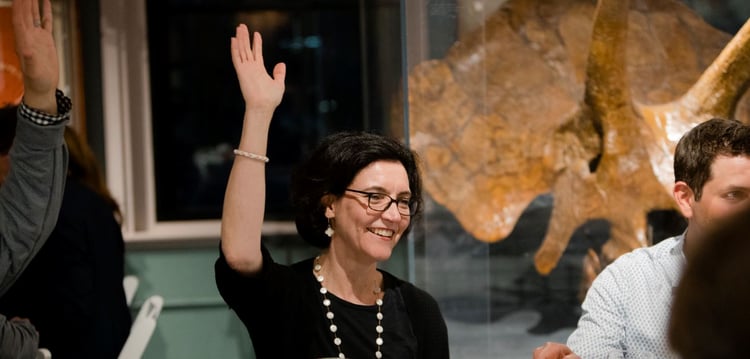If I offered you a solution to whiter teeth that required a 30-minute commitment, twice a day for 2 straight weeks, how much would you be willing to pay for that product? What if I told you another solution (pun intended) exists that only requires a 30-second commitment and was easier to apply to your teeth – how much would you pay for that?
What drove your decision – the time commitment each morning? Ease of use? Would you be skeptical regarding the effectiveness of the latter offer?
The consideration of these factors (amongst many others) drive a customer’s willingness to pay, one of the four major components of Harvard Business School's Value Stick. (And if you just googled “Value Stick,” then you’re asking yourself the same question that I did two weeks ago.)
What is the Value Stick?
At our annual CEO Summit at Harvard Business School, Professor Felix Oberholzer-Gee facilitated a discussion around a case study highlighting the competitive landscape of teeth whitening products in the early 2000s. Using the Value Stick, Professor Oberholzer-Gee detailed a pricing strategy with four components:
- Willingness to Pay (WTP)
- Price
- Cost
- Willingness to Sell (WTS)
We all understand price and cost from freshman year's Economics 101 class. But once Professor Oberholzer-Gee pointed out the zero-sum impact of adjusting price and cost, the way I appraise goods and services would never be the same. When our companies want to increase revenues, the first two data points reviewed are price and quantity (and maybe revenue recognition if a CPA is on staff). By having such a narrow-minded view, we completely ignore two very important perspectives: the customer’s and supplier’s.

Who are we competing against?
I’ll admit it: when I knew the answer Professor Oberholzer-Gee was looking for, I felt wicked smahht. We spend so much energy differentiating our company from our direct competitors, and the easiest way to do that is through price. In reality, the people the company is competing with are its suppliers and customers. The goal is simple: get your customers to pay you more and your suppliers to charge you less. But as I mentioned before, these are zero-sum activities. The way to ensure your customers will pay you more is to increase their willingness to pay you more. The amount one can charge a customer is bound by the customer’s willingness to pay. If willingness to pay is increased, the ability to increase price becomes much easier. And now we don’t have to bother writing that memo on why our revenue recognition methodology has been modified.
While this was fairly new to me, and certainly had never been articulated in such a clear manner, it seemed a number of our CEOs were already thinking about this. However, very few CEOs were thinking about the bottom of the Value Stick: how do we increase our suppliers’ willingness to sell? It’s straightforward how to add value to the customer, but how can we provide it to our suppliers?
Competition vs. Collaboration
I’m not an Economics professor, so I don’t think I’m qualified/capable of rattling off the top five ways to increase willingness to sell. However, I was pleased to hear that Harvard had recently changed their point of view on the debate of competition vs. collaboration. It turns out increasing both WTP and WTS is easier to accomplish through collaboration. I’ve always felt that the best negotiator is the one who can learn exactly what his or her counterpoint wants, and then give it to them in the most efficient way possible.
In college, I learned about the Nash Equilibrium and Prisoner’s Dilemma, which explains why two rational people won’t cooperate, even if it’s in their collective best interests. The only way to avoid the dilemma is to collaborate with your customers and suppliers (and, when legal, direct competitors) in a mutually beneficial manner. The entire value stick then expands, allowing more room for the company and its customers and suppliers to capture additional value.

Applying what we learned
Once the group covered the Value Stick, it continuously popped up during subsequent discussions. The Value Stick doesn’t only apply to the customer/supplier landscape, but also with employees, your kids, and virtually any negotiation process. The topic of millennials and how they choose where to work is a great example: millennials want to feel like they are making a difference in the world. As an employer, if you’re able to provide your employees that precise feeling, their willingness to sell will increase, and they may be willing to accept a position for a salary below market value. The use of complements was a more direct example of applying the Value Stick to our portfolio companies. Bundling products in a situation where the whole is greater than the sum of the parts creates additional value for the customer, increasing WTP.
Teeth whitening, sticks and triangles – who would have thought the Harvard curriculum would be so simple? Learning was the easy part, continuously applying it to our work and personal lives is the challenge.

